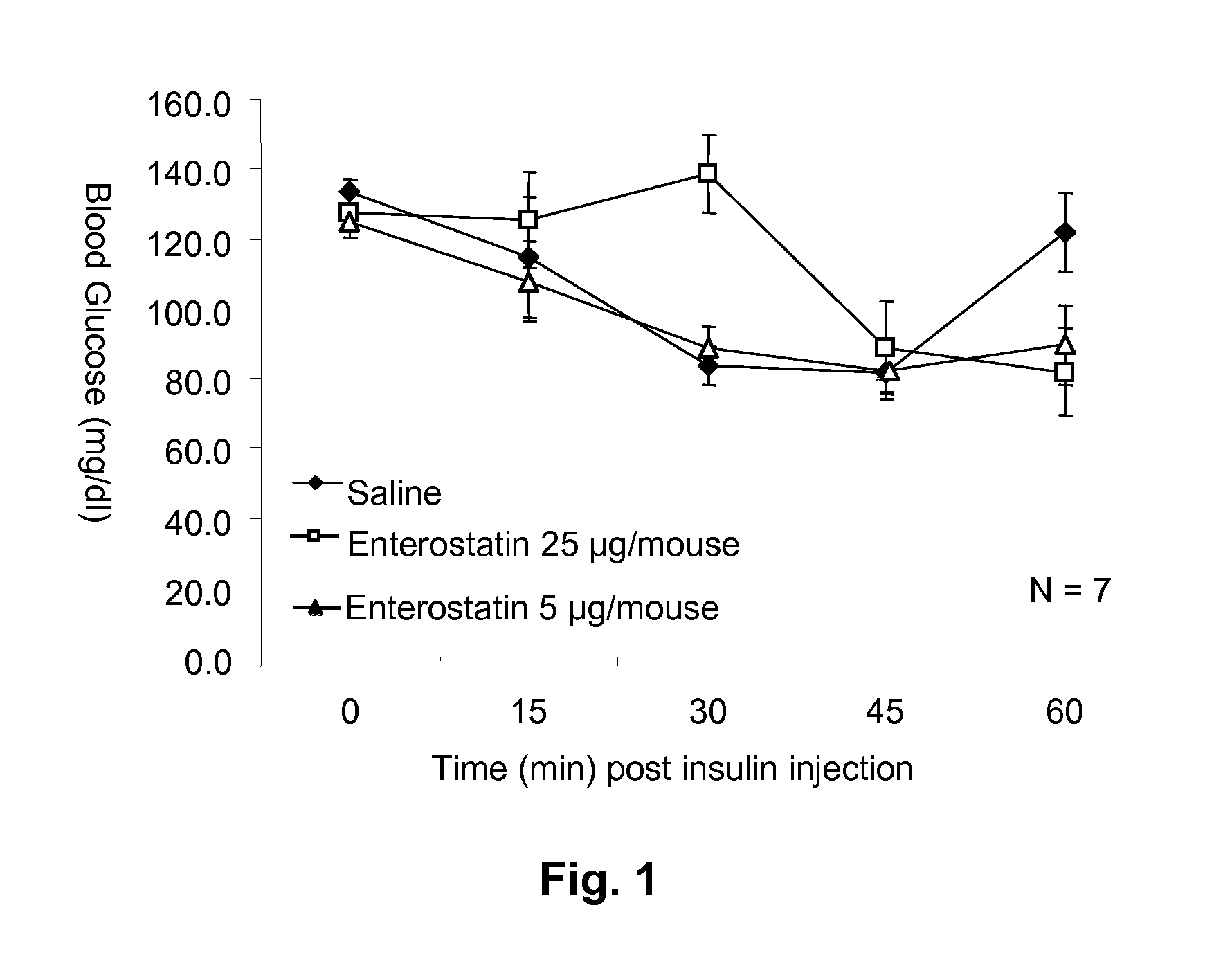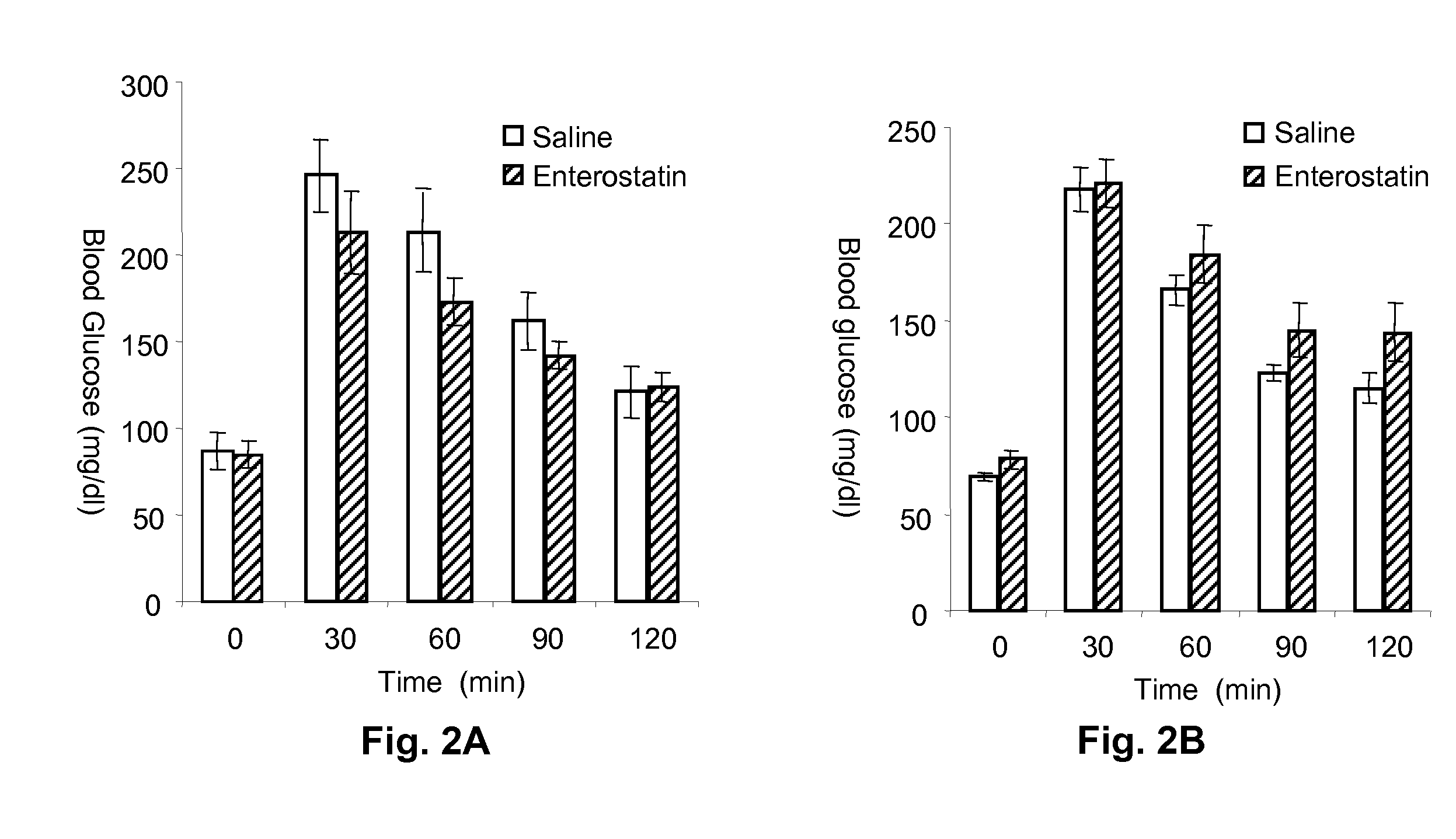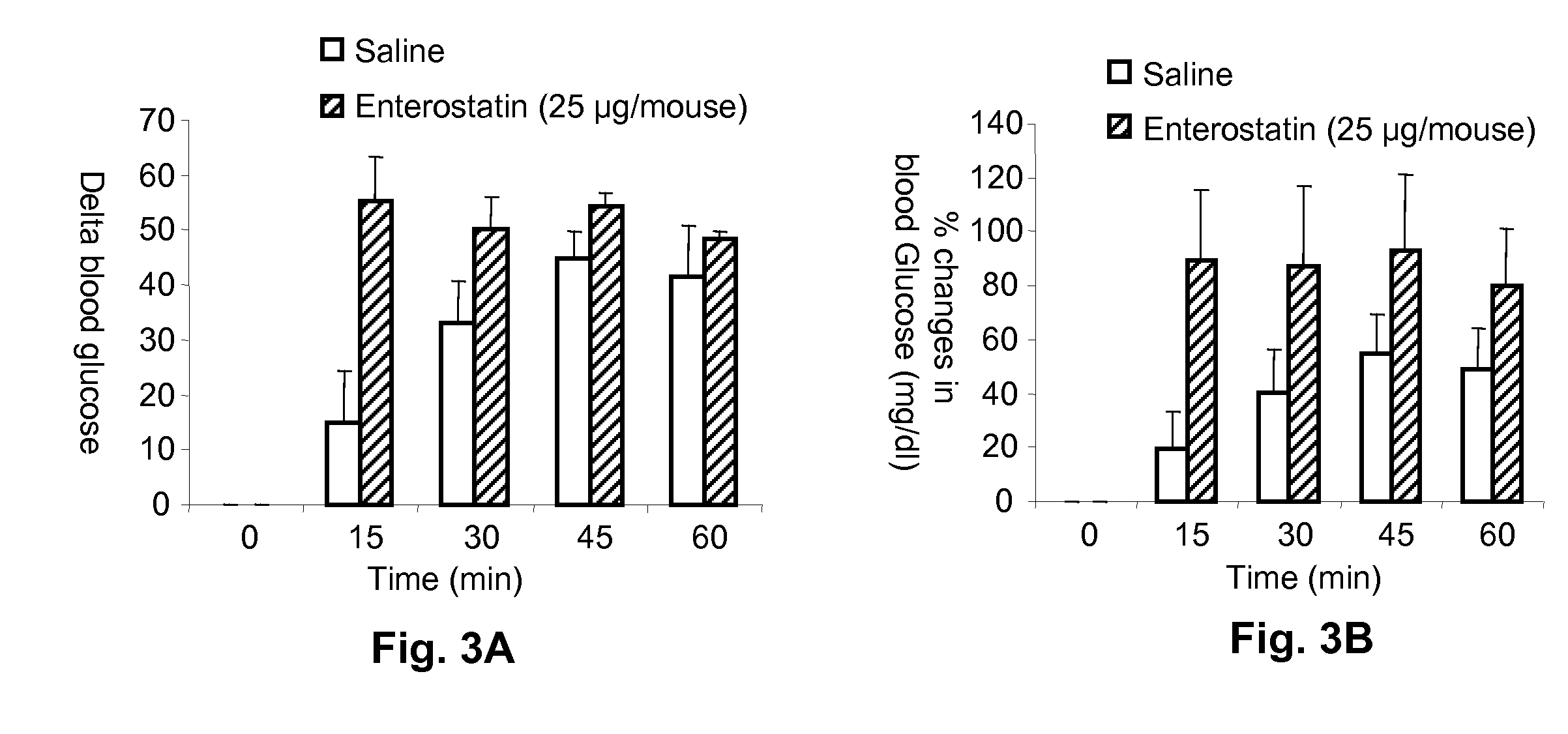Enterostatin as Therapeutic Agent for Hypoglycemia
a technology of enterostatin and therapeutic agent, which is applied in the field of enterostatin as therapeutic agent for hypoglycemia, can solve the problems of insufficient vivo concentration of enterostatin, transient neonatal hypoglycemia, and reactive hypoglycemia, and achieves less of an initial decrease in blood glucose, increased blood glucose levels, and low toxicity
- Summary
- Abstract
- Description
- Claims
- Application Information
AI Technical Summary
Benefits of technology
Problems solved by technology
Method used
Image
Examples
example 1
[0038]Materials and Methods.
[0039]Animals: C57B1 / 6 male mice were purchased from The Jackson Laboratory (Bar Harbor, Me.) at 6 weeks of age. The mice were initially housed in groups of three in acrylic cages in a room with a 12-hour light / dark cycle and with controlled temperature (22 to 23° C.) and with free access to water. The mice were fed a high fat diet (4.78 kcal / g, 56% energy as fat; Research Diets Inc, Brunswick, N.J.). The composition of the diet has been previously described (15). Body weights were measured three time per week. At 8 weeks of age, the mice were switched to single housing.
[0040]Peptide and antibodies: Enterostatin was synthesized by solid-phase chemistry purified by high performance liquid chromatography, and estimated to be greater than 90% purity by the Core Laboratory of Louisiana State University Medical Center (New Orleans, La.). Antibodies against phosphor-AMP kinase (pAMPK) and AMP kinase (AMPK) were purchased from Upstate Biotechnology (Lake Placid,...
example 2
Effect of Enterostatin on Serum Blood Glucose
[0042]Groups of mice (n=4 to 7) were subjected to glucose and insulin tolerance tests and to a study of the response of blood glucose to intraperitoneal injection of enterostatin. There was a minimum of 1 week between each test for the mice to recover.
[0043]Enterostatin Effect on Blood Glucose Response to Insulin. To test the effect of enterostatin on the blood glucose response to exogenous insulin, mice were fasted for 4 hours, and insulin (0.75 mU / gm body weight) or saline (0.1 ml / 10 gm body weight) was injected intraperitoneally at time zero. Enterostatin (5 or 25 ug / mouse in 0.1 ml saline vehicle) or saline vehicle was also injected intraperitoneally (ip) at time zero. Blood samples were taken from the tail vein immediately before the injections, and then at 15, 30, 45 and 60 minutes afterwards. The samples were assayed for glucose on a glucometer (Ascencia Elite XL, Bayer, Pittsburgh, Pa.).
[0044]The effect of enterostatin on the bloo...
example 3
Enterostatin Effects on AMPK Activity In Vivo
[0049]A separate set of mice (n=6 / group) were fasted overnight (18 hours) before injection with either saline vehicle (0.1 ml) or enterostatin (5 or 25 ug / mouse) intraperitoneally. The mice were sacrificed by cervical dislocation either at 30 min (certain enterostatin-treated groups) or 60 min (both certain enterostatin- and vehicle-treated groups) after the injection. The tissues of liver and hypothalamus were rapidly dissected and frozen in liquid nitrogen. The tissues were stored at −80 C before processing for AMPK activity. For AMPK activity, the tissues were unfrozen, the cells lysed, and the cytosolic proteins subjected to Western blot analysis for AMPK and pAMPK activity.
[0050]FIG. 4 illustrates the results of the Western blot analysis for pAMPK activity in liver and hypothalamus tissues. As shown in FIG. 4, liver pAMPK levels were reduced at both 30 and 60 min after injection of enterostatin at even the lower dose. Total AMPK was ...
PUM
| Property | Measurement | Unit |
|---|---|---|
| body weight | aaaaa | aaaaa |
| body weight | aaaaa | aaaaa |
| body weight | aaaaa | aaaaa |
Abstract
Description
Claims
Application Information
 Login to View More
Login to View More - R&D
- Intellectual Property
- Life Sciences
- Materials
- Tech Scout
- Unparalleled Data Quality
- Higher Quality Content
- 60% Fewer Hallucinations
Browse by: Latest US Patents, China's latest patents, Technical Efficacy Thesaurus, Application Domain, Technology Topic, Popular Technical Reports.
© 2025 PatSnap. All rights reserved.Legal|Privacy policy|Modern Slavery Act Transparency Statement|Sitemap|About US| Contact US: help@patsnap.com



